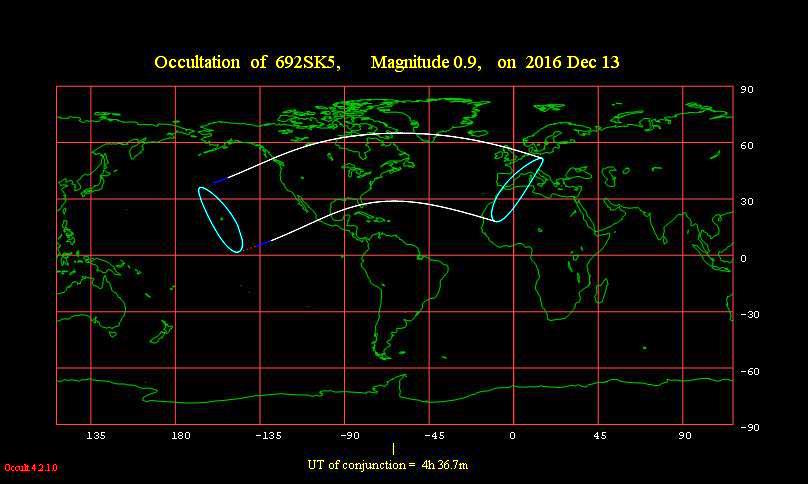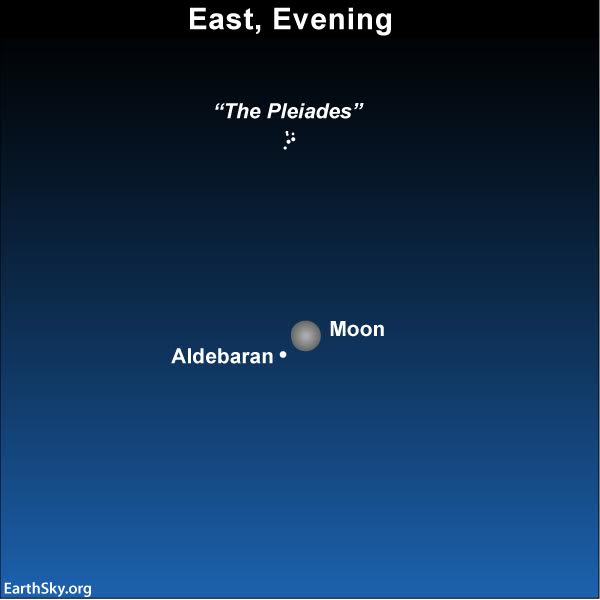Tonight – December 12, 2016 – the almost-full waxing gibbous moon occults (covers over) Aldebaran, the star depicting Taurus the Bull’s ruddy eye. In addition, the brilliant supermoon is hindering this year’s Geminid meteor shower, which is going on now and expected to peak tomorrow night (December 13-14).
If you want to try to watch tonight’s occultation of Aldebaran, click here to find out occultation times in Universal Time (UTC). The worldwide map below shows where this occultation takes place in between the solid white lines. At places to the north of the top white line, people see the moon swinging to the south of Aldebaran; and at places to the south of bottom white line, people see the moon swinging north of Aldebaran.
To convert UTC to local time in North America:
Atlantic Time (AST): UTC – 4 hours
Eastern Time (EST): UTC – 5 hours
Central Time (CST): UTC – 6 hours
Mountain Time (MST): UTC – 7 hours
Pacific Time (PST): UTC – 8 hours
By the way, at the white lines, it’s a graze occultation, whereby the star flits in and out of view along the moon’s limb.

The moon will be out in full force these next few nights, to obliterate all but the brightest Geminid meteors.
For meteor watchers, the timing of this month’s full moon couldn’t be much worse. The moon reaches perigee – its closest point to Earth for the month – on December 12, at 23:27 UTC (at US time zones: 6:27 p.m. EST, 5:27 p.m. CST, 4:27 p.m. MST and 3;27 p.m. PST). Then, just over one day later, the moon turns full on December 14, at 0:05 UTC (at US time zones: on December 13 at 7:05 p.m. EST, 6:05 p.m.CST, 5:05 p.m. MST and 5:05 p.m. PST), to beam all night long on the peak night of the Geminid meteors. What a unfortunate time for a supermoon to light up the nighttime!
If you’re game, give this shower a try anyway. The Geminids rank as one of the year’s more prolific showers, peppering the nighttime with 50 or more meteors per hour on a dark, moonless night. Despite the moonlight, some Gemini meteors will surely (we hope!) be bright enough to overcome the moonlit glare.
From anywhere worldwide, the shower offers the greatest number of meteors in the wee hours after midnight, centered around 2 a.m. local time.
Bottom line: On December 12, 2016 the almost-full moon occults, or covers over, the star Aldebaran. Meanwhile, this moon is obscuring the annual Geminid meteor shower.












